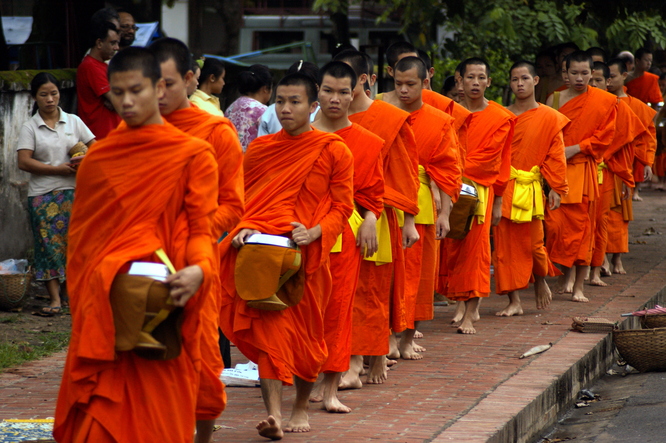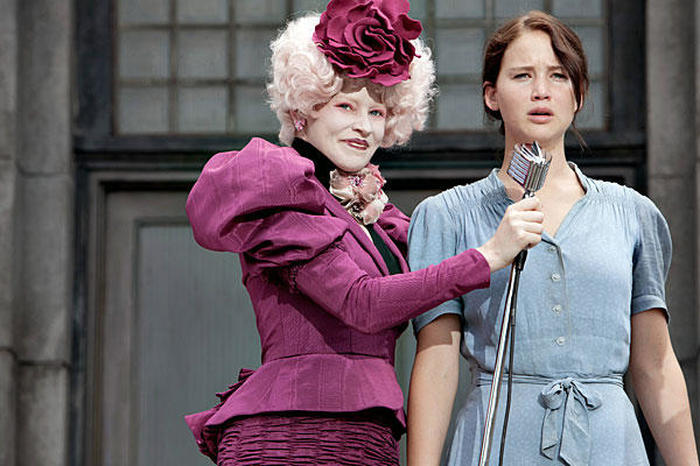FORMING FRATERNITIES AND SORORITIES
Homosocial literary theory falls into the category of SOCIETAL MIRRORS, or criticisms that reflect society (social mirrors also include Marxism, feminism, postcolonialism, affliction theory, and ecocriticism). Societal mirrors focus on the idea of The Other, a term for a person in society with little power or agency (the ability to change their circumstances). Those with agency are known as the privileged group, as they have access to resources that The Other does not. Some members of the privileged group actively work toward this inequality, while most members of the privileged group have social blindness--they do not willfully wish to subjugate others, but because their privilege is normal, they do not perceive or understand the struggles of The Other.
Homosocial theory is closely linked to feminism and can be best understood as a reaction to feminist thought. Feminism is founded upon the idea that men define what it means to be normal in society, casting women as the Other. This leads to certain expectations that women must live up to because of their sex. During the foundation of academic feminism in the 1960s, Simone de Beauvoir made the distinction between sex (one's physical body) and gender (the expectations a society has for a person based on their sex). Her argument was that the only difference between men and women is biological (sex) and any stereotyping or belief that "men can only do x while women can only do y" is a social construct that is changeable (gender). For example, the idea that pink is a girl's color and blue is a boy's color is not rooted in biology but is a gender construct--this is why these colors do not define boys and girls in different societies and why, before World War II, pink was considered manly.
While feminists used this difference between sex and gender to explain and analyze relationships between men and women, other theorists took this idea of gender and asked how these gender norms became defined. They found what is seen as normal behavior for men and women is defined by members of their same sex, and that in order to join friendship groups have relationships with other men and women, we learn and follow gender norms. Fathers teach their sons how to be men, as mothers teach their daughters. Fraternities, or male friendship groups, reinforce expectations on how to act like men; sororities, or friendship groups of women, function in the same way. These actions, according to theorist Judith Butler, are "ritual," meaning we expect people of our same sex to perform to these expectations. These interactions with members of the same sex are called homosocial relationships.
Homosocial theory is closely linked to feminism and can be best understood as a reaction to feminist thought. Feminism is founded upon the idea that men define what it means to be normal in society, casting women as the Other. This leads to certain expectations that women must live up to because of their sex. During the foundation of academic feminism in the 1960s, Simone de Beauvoir made the distinction between sex (one's physical body) and gender (the expectations a society has for a person based on their sex). Her argument was that the only difference between men and women is biological (sex) and any stereotyping or belief that "men can only do x while women can only do y" is a social construct that is changeable (gender). For example, the idea that pink is a girl's color and blue is a boy's color is not rooted in biology but is a gender construct--this is why these colors do not define boys and girls in different societies and why, before World War II, pink was considered manly.
While feminists used this difference between sex and gender to explain and analyze relationships between men and women, other theorists took this idea of gender and asked how these gender norms became defined. They found what is seen as normal behavior for men and women is defined by members of their same sex, and that in order to join friendship groups have relationships with other men and women, we learn and follow gender norms. Fathers teach their sons how to be men, as mothers teach their daughters. Fraternities, or male friendship groups, reinforce expectations on how to act like men; sororities, or friendship groups of women, function in the same way. These actions, according to theorist Judith Butler, are "ritual," meaning we expect people of our same sex to perform to these expectations. These interactions with members of the same sex are called homosocial relationships.
FOLLOWING THE BRO CODE
So how do these relationships work? Different social groups will define masculinity (manliness) and femininity (womanliness) differently. For example, to fit masculine expectations in modern America, a man should be knowledgeable about cars, watch sports, and refrain from crying. Other men reinforce and teach these expectations through shared activities ("Wanna come over and help me replace my serpentine belt?") and conversational "tests" ("So, you think the Rockies have a shot at the playoffs this year?") Women have similar expectations taught by their peers and female family members (how to wear makeup, dress, cook, etc), and both groups have rules about sticking to ones fraternity or sorority over heterosocial relationships (this idea is most popularly summarized as "bros before hos"). The "bro codes" and "girl codes" have some variance: a group of male gamers, for instance, may reject the idea that they must know about models of cars, but readily reinforce the idea that an American male know about different models of guns. Often, the social norms for men and women are reversed: for example, men mow the lawn while women maintain the garden, and men grill food while women bake food.
So what if a person fails these tests of gender or rejects these rules? These individuals are often outcast and even ridiculed by their same-sex peers. Curiously, such insults cast the person in terms of the opposite sex: a boy who often cries at movies and hates sports is called a "pansy," a "little girl," and worse names that usually are derogatory to women, while women who don't show sensitivity and don't wear makeup are "butch" or "tomboys." They become the Other in homosocial theory, and are labeled as Queer, which is synonymous for "odd" or "different" (this is why homosociality is also called "queer theory").
So what does a queer character look like? Let's look at Katniss Everdeen from The Hunger Games as an example. In District 12, Katniss fits gender expectations: the other women, like Katniss, live spartan lifestyles with simple, practical clothing and no makeup. When Katniss goes to the Capitol, however, she is expected to perform her gender based on the Capitol's expectations: she must wear makeup and elaborate gaudy dresses to "be girly enough." Though she dislikes the efforts of Effie Trinket and her team to make her more feminine, she eventually relents because she knows that it will help her be liked by sponsors who could send her survival supplies in the games. Yet Katniss questions her decision to give up part of her identity to the Prep Crew several times throughout the book. Note that Katniss herself doesn't change: she still likes boys, loves to hunt, and values her family above everything else. Her struggle is also not about becoming "less of a girl," but about wanting the Capitol's idea of what a girl can look like to include her.
So what if a person fails these tests of gender or rejects these rules? These individuals are often outcast and even ridiculed by their same-sex peers. Curiously, such insults cast the person in terms of the opposite sex: a boy who often cries at movies and hates sports is called a "pansy," a "little girl," and worse names that usually are derogatory to women, while women who don't show sensitivity and don't wear makeup are "butch" or "tomboys." They become the Other in homosocial theory, and are labeled as Queer, which is synonymous for "odd" or "different" (this is why homosociality is also called "queer theory").
So what does a queer character look like? Let's look at Katniss Everdeen from The Hunger Games as an example. In District 12, Katniss fits gender expectations: the other women, like Katniss, live spartan lifestyles with simple, practical clothing and no makeup. When Katniss goes to the Capitol, however, she is expected to perform her gender based on the Capitol's expectations: she must wear makeup and elaborate gaudy dresses to "be girly enough." Though she dislikes the efforts of Effie Trinket and her team to make her more feminine, she eventually relents because she knows that it will help her be liked by sponsors who could send her survival supplies in the games. Yet Katniss questions her decision to give up part of her identity to the Prep Crew several times throughout the book. Note that Katniss herself doesn't change: she still likes boys, loves to hunt, and values her family above everything else. Her struggle is also not about becoming "less of a girl," but about wanting the Capitol's idea of what a girl can look like to include her.
SO HOW DO I READ LIKE A HOMOSOCIAL THEORIST?
Homosocial theorists focus on relationships between men and other men and women and other women, what gender rules are taught and enforced by these brotherhoods and sisterhoods, and how characters struggle to fit into these roles.
- A queer theorist looks at how male characters treat other men. What defines mainlines? How is this taught--through family members (fathers, uncles, brothers, etc) or male friendships? What are tests of manhood? What happens to a man if he fails this test?
- A queer theorist looks at how female characters treat other women. What defines a woman? How are expectations for women taught--through family members (mothers, aunts, sisters, etc) or female friendships? How do women judge and test other women? What happens to a woman if she fails to live up to gender stereotypes? Note: this are of homosociality heavily overlaps with feminism.
- A queer theorist looks at how characters struggle to live up to gender definitions. This can include characters who want to follow gender rules (like Ishmael in Moby Dick, who wants the other seamen to befriend and like him) and characters who reject gender rules (like Scout in To Kill a Mockingbird, who is mad when she has to wear a dress instead of overalls). How do these characters struggle and who do they struggle against? Why do they fall short of gender expectations? Are they taught wrong? Are the expectations unfair or unrealistic?
THE BREAKDOWN
- Homosociality focuses on how men interact with men and women interact with women
- Look for how men define masculinity and how they teach and test the manliness of others
- Look for how women define femininity and how they teach and test the "ladylike qualities" of others
- Look for characters who struggle to fit into the gender expectations
- Look for characters who rebel against the gender expectations
- Look to see if there are queer characters in the story
- Look to see if queer characters actually sound like real people or stereotypes
GREAT TEXTS TO READ FROM A HOMOSOCIAL LENS
- Oedipus the King by Sophocles
- The Clouds by Aristophanes
- As You Like It by William Shakespeare
- The Merchant of Venice by William Shakespeare
- Middlesex by Jeffrey Eugenides
- Hope Leslie by Catherine Maria Sedgewick
- Pride and Prejudice by Jane Austin
- The Wizard of Oz by L. Frank Baum
- The Great Gatsby by F. Scott Fitzgerald
- A Farewell to Arms by Ernst Hemingway
- To Kill a Mockingbird by Harper Lee
- Arkham Asylum: A sErious House on Serious Earth by Grant Morrison and Dave McKean
- Fun Home by Allison Bechdel
FURTHER CRITICAL READING
xxxxxxxx

